My 1967 Mustang Fastback: How Much Does A Classic Car Cost?
I have owned a classic 1967 Ford Mustang Fastback since 1998. It is a fun car that gets a lot of attention on the road and at events. Today I am writing a bit about my history with the car and some of the costs associated with driving a classic car…
My 1967 Mustang Fastback
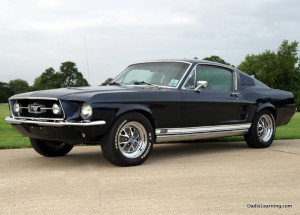 The Mustang that I currently own is actually my second Mustang. When I was in high school and college I owned a 1966 Mustang coupe. (Photo in gallery below) That car was totaled out by a drunk driver in an accident I was blessed to survive with no injury. A car friend in the area found my Fastback in a storage locker outside of Denver. The body of the car was straight (i.e. – no dents, or major body work to be done) but the car had been stored for years and the mechanical system would have to be completely rebuilt. We purchased the car from my friend in the Fall of 1998. (Want to learn more about various Mustang body styles? Click here.)
The Mustang that I currently own is actually my second Mustang. When I was in high school and college I owned a 1966 Mustang coupe. (Photo in gallery below) That car was totaled out by a drunk driver in an accident I was blessed to survive with no injury. A car friend in the area found my Fastback in a storage locker outside of Denver. The body of the car was straight (i.e. – no dents, or major body work to be done) but the car had been stored for years and the mechanical system would have to be completely rebuilt. We purchased the car from my friend in the Fall of 1998. (Want to learn more about various Mustang body styles? Click here.)
I am not a mechanic and neither is my Dad, but I am mechanically inclined and can often figure things out after reading about them for a bit. I started taking the car apart in my parent’s driveway, pulling the motor, transmission, and stripping the interior. There were times where I felt overwhelmed but I had friends in the area who I could hit up for some advice. By Spring 1999 the car was starting to come back together with a completely rebuilt engine and a brand new interior. In early Summer 1999 I took off on the multi-state Hot Rod Magazine Power Tour with some college buddies in the freshly rebuilt Mustang. The car has been able to survive even when I was living out of state for several years and as I have started a family.
Insurance, Inspection and Tags
Antique and collector car insurance is an interesting business. I have used Haggerty insurance for years after my Allstate agent switched me over to the service. Haggerty provides insurance for antique and collectible cars that are not driven daily. Insuring a classic car typically involves getting an appraisal of the car’s value. Let’s say the appraisal comes in at $18,000. You can insure the car for $20,000 and pay just a bit more every year for the premium. I have my car insured for a replacement cost of $25,000 and the annual cost is $293.
I don’t know what your insurance rate is, but that works out to $25 a month and is significantly lower than my daily driver. The other annual costs include license and inspection. License stickers in Texas cost $62. Vehicles older than 25 years only need a safety inspection each year in Texas. That basic inspection costs $14.50. Newer vehicle inspection run just under $40.
Vehicle Appreciation
Older cars, especially highly collectible ones, appreciate in value as they get older. Back in 1998 when I was looking for a replacement Mustang, solid cars could be found for $2,000 to $3,000 and the high end ‘drivers’ maxed out around $10,000. A quick search of Craigslist today will turn up junked Mustangs for $3,000 to $5,000 and daily drivers starting at around $8,000 and going upwards of $15,000. Fastbacks and convertibles list all the time for $20,000 to $30,000.
The 1967 Mustang Fastback provides an interesting study for vehicle appreciation. My Mustang was purchase in 1998 for $5,000. Approximately $6,000 was spent restoring it. At the time, if I had sold the car I would have lost money like most restoration projects. When it was completely restored in 1999 the max dollar the car would have brought was $10,000. Thanks to a bit of panic in the market, my 1967 Fastback has approximately doubled in price.
Quick story: Back in 2007 a Dallas-area company called Unique Performance, Inc. got busted by federal agents for “title washing” and other crimes. They were ‘recreating’ VIN numbers for cars that faked the car history and were not delivering finished cars to customers. Many of these cars were 1967-1968 Fastbacks and the collector world went a little crazy. I have heard varied accounts from car guys, some saying that hundreds of cars were impounded and totaled. But in fact only about 60 frames were seized and later auctioned. The lore of the bust has driven market prices up though. You can read more about it here.
There were roughly 70,000 1967 Fastbacks produced and around 42,000 1968 Fastbacks. Experts estimate a 5-10% survival rate for these 46 year-old cars. If that is the case there are about 10,000 to 11,000 of this body style of Fastback on the road. In recent years Fastbacks have become as desirable if not more desirable than Mustang convertibles. The 1967-68 Fastback is also the base car for “Elanor” from Gone in 60 Seconds which has also helped to increase the price of this particular model.
A few more things…
- Some people will be surprised that my Mustang gets 25-30 mpg on the highway. Of course that mileage estimate is based on conservative driving.
-
Driving old cars means breaking down. It’s not a matter of if but when you will break down. I have a tool bag and a AAA membership for breakdowns. Cars are meant to be driven every day and belts, hoses, gaskets, and tires can get old if you don’t keep good records and change them regularly. Little things are constantly going out on the Mustang too. They know me at the local AutoZone.
- I park far away from everyone else when I take the Mustang to the store. The last thing I want to get is an accidental door ding.
- Be prepared for some attention. I was out running some local errands in the Mustang on Friday and kept track of comments, conversations, and thumbs ups. In my two hour outing I had 7 quick comments either said in passing or yelled from other motorists. I had 5 different people approach me and start a conversation about the car. There were about 12 ‘thumbs up’ or waves as I drove along.
- Classic cars must have good storage. In fact, the Haggerty insurance policy requires secure, indoor storage. My sister is nice enough to let me park the Mustang in her garage for free.
- Classic cars are pretty easy to work on and popular cars like Mustangs are easy to find parts for. Working on a car takes time. Shops that specialize in older cars charge a pretty penny for labor.
- Classic cars lack some of the comforts of modern cars. With no AC I tend to leave the Mustang in the garage during the hot summer months. AC can be added to the car but at a cost of $3,000 it is a significant expense.
- It’s nice to have a backup car. If one of our cars goes in the shop I can easily pull out the Mustang and use it.
The Bottom Line
Owning a classic car can be an expensive endeavor, but they can sure be a lot of fun. My Mustang is part of our long-term emergency fund. We have cash on hand as Dave Ramsey and others suggest. But the Mustang could be quickly liquidated if a major emergency came up. The value of my Mustang has done better in recent years than some of my stock investments. And it is a lot more fun than a piece of paper!
- My 1967 Mustang Fastback.
- A nice view looking down the side of my Mustang.
- Our oldest daughter is always excited about a ride in the Mustang!
- Be prepared to be on a first name basis at your local auto parts store.
- Safely away from all the other cars.
- My old 1966 Mustang that got totaled out by a drunk driver. My first car is also in the background, a Chevy Cavalier.
- Gutted out and ready for restoring.
- The Fastback after the new motor was in. Light bar has been added. You can still the skinny stock wheels with pop off covers.

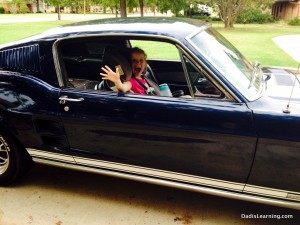
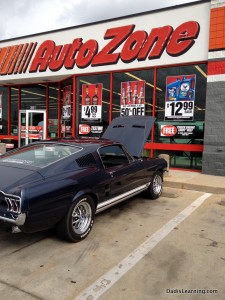
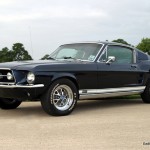
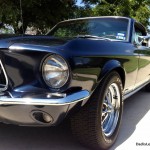

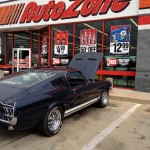
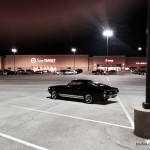
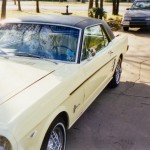
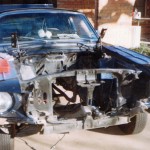
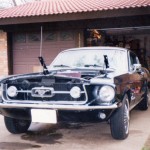
Cool story, sweet ride. I have owned a 1968 black coupe Mustang since September, 1976. Dabeest is my first car. It too was totaled in an accident back in 2006, but I was able to put it back together.
Check out my website, Dabeest.com, for a complete story.
There is a 50 year anniversary celebration for the Mustang in Las Vegas and Charlotte on April 16 – 20, 2014 put on by Mustang Club of America (MCA). I will be at the Vegas one. I hope to see you there.
Jim
Thanks Jim! That is an amazing restoration you did on your 1968. I have honestly never seen one with the entire rear taken off of it! The 50th anniversary has snuck up on me. It’s crazy to think that I drive a car that was around 15 years before I was born.
In 1967, I bought a new 1967 Fastback GT 289 4spd for $3,500. Sold it in 1972 for $900.00. One of the biggest mistakes of my life!